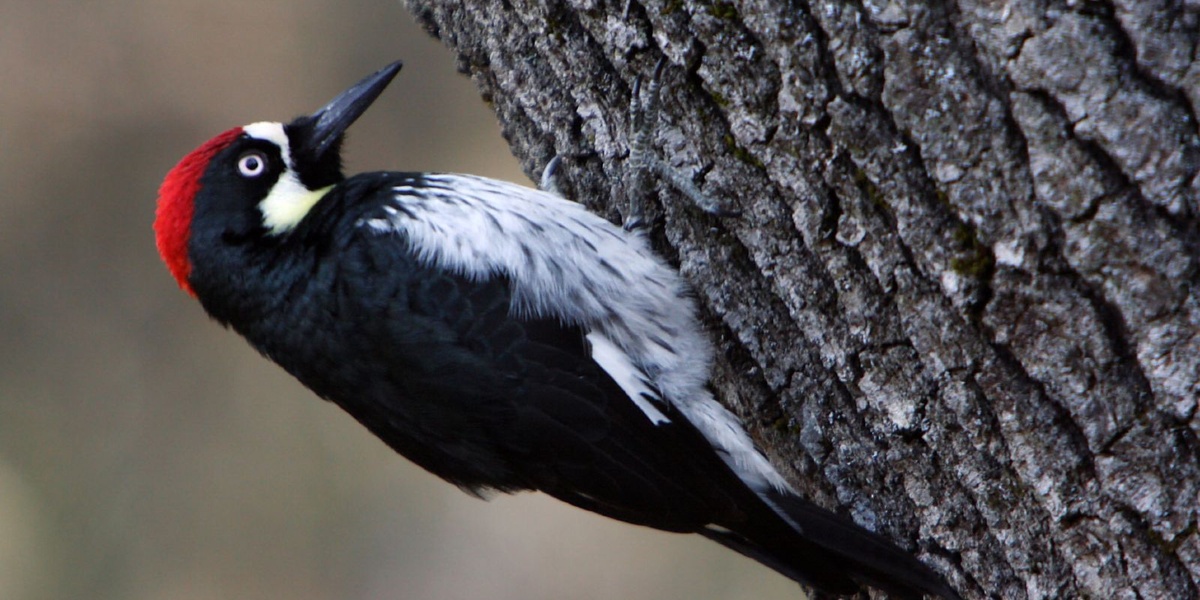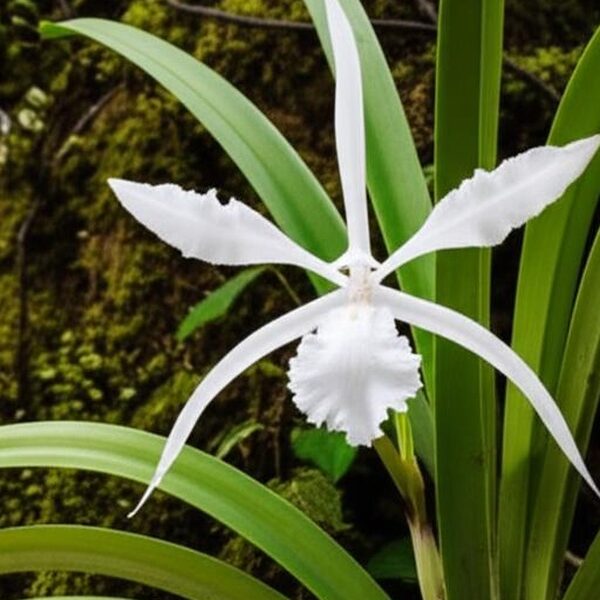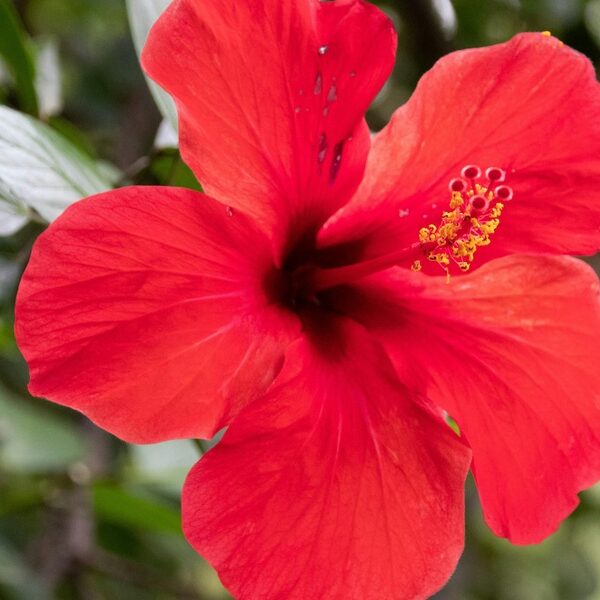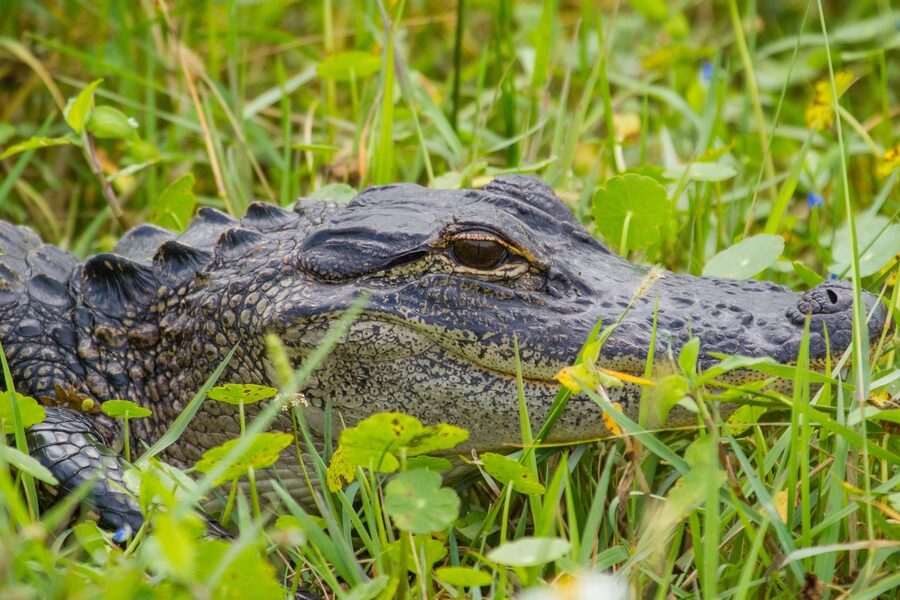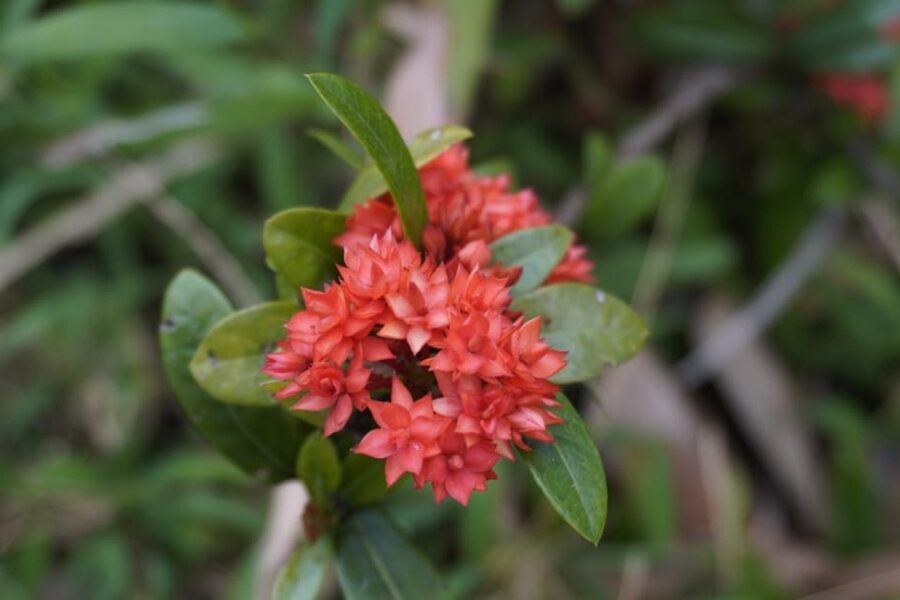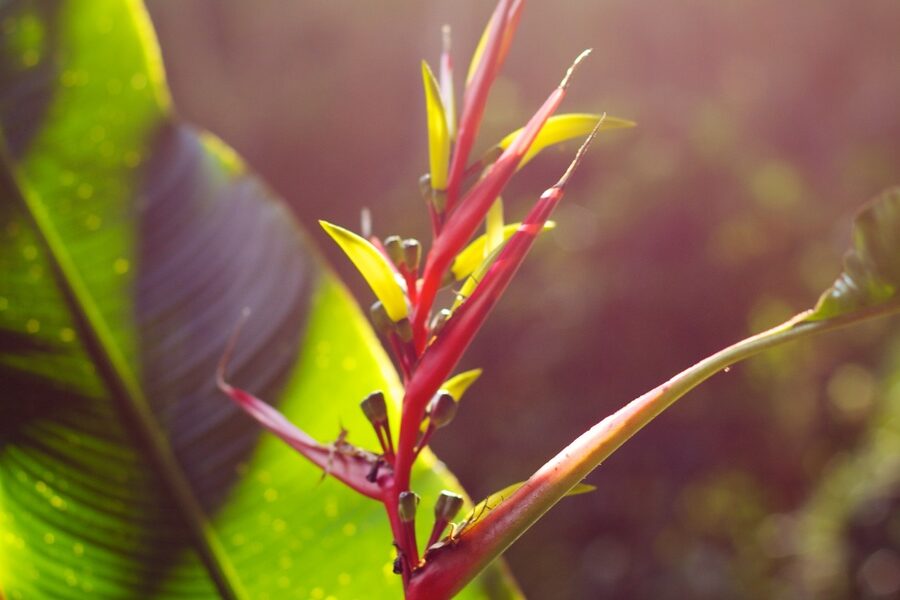Forests mix shade, light and layers of life, so a practical list helps make sense of which organisms are commonly encountered where you explore. Whether you’re walking a local reserve or reviewing survey data, a clear, compact reference speeds identification and comparison.
There are 99 forest species, ranging from African Mahogany to Wood Frog, and each entry is arranged with Scientific name, Type, Typical size (m) to help with quick checks and field notes — you’ll find below.
How were the species chosen for this list?
The species were selected for broad ecological representation and frequency in published surveys and regional checklists, prioritizing taxa that are commonly recorded or useful for habitat assessment; the list is not exhaustive but aims to show a practical cross-section from canopy trees to understory amphibians.
How can I use the Scientific name, Type and Typical size (m) columns in the field?
Use the Scientific name to confirm identity across languages, the Type (tree, shrub, mammal, amphibian, etc.) to narrow search scope, and Typical size (m) as a quick visual benchmark—remember sizes are averages, so combine them with photos, range maps and local guides for accurate identification.
Forest Species
| Common name | Scientific name | Type | Typical size (m) |
|---|---|---|---|
| Scots Pine | Pinus sylvestris | Tree | 35 |
| Eastern White Pine | Pinus strobus | Tree | 40 |
| Douglas Fir | Pseudotsuga menziesii | Tree | 75 |
| Norway Spruce | Picea abies | Tree | 40 |
| Common Beech | Fagus sylvatica | Tree | 35 |
| Red Oak | Quercus rubra | Tree | 25 |
| Sugar Maple | Acer saccharum | Tree | 30 |
| Quaking Aspen | Populus tremuloides | Tree | 20 |
| Paper Birch | Betula papyrifera | Tree | 25 |
| Giant Sequoia | Sequoiadendron giganteum | Tree | 85 |
| Kapok Tree | Ceiba pentandra | Tree | 60 |
| Teak | Tectona grandis | Tree | 40 |
| African Mahogany | Khaya ivorensis | Tree | 45 |
| Rubber Tree | Hevea brasiliensis | Tree | 30 |
| Brazil Nut Tree | Bertholletia excelsa | Tree | 50 |
| Common Holly | Ilex aquifolium | Shrub | 10 |
| Rhododendron | Rhododendron ponticum | Shrub | 5 |
| Huckleberry | Vaccinium parvifolium | Shrub | 1.5 |
| Trillium | Trillium grandiflorum | Wildflower | 0.4 |
| Wood Anemone | Anemone nemorosa | Wildflower | 0.2 |
| Bracken Fern | Pteridium aquilinum | Fern | 1.5 |
| Ostrich Fern | Matteuccia struthiopteris | Fern | 1.2 |
| Sphagnum Moss | Sphagnum spp. | Moss | 0.1 |
| Reindeer Lichen | Cladonia rangiferina | Lichen | 0.08 |
| Gray Wolf | Canis lupus | Mammal | 1.2 |
| Red Fox | Vulpes vulpes | Mammal | 0.9 |
| American Black Bear | Ursus americanus | Mammal | 1.6 |
| Brown Bear | Ursus arctos | Mammal | 2 |
| Eurasian Lynx | Lynx lynx | Mammal | 1.1 |
| Bobcat | Lynx rufus | Mammal | 0.8 |
| Raccoon | Procyon lotor | Mammal | 0.8 |
| Wolverine | Gulo gulo | Mammal | 1 |
| Pine Marten | Martes martes | Mammal | 0.5 |
| Tiger | Panthera tigris | Mammal | 3 |
| Jaguar | Panthera onca | Mammal | 1.7 |
| White-tailed Deer | Odocoileus virginianus | Mammal | 1 |
| Moose | Alces alces | Mammal | 2.8 |
| Elk | Cervus canadensis | Mammal | 2.4 |
| Reindeer | Rangifer tarandus | Mammal | 1.9 |
| Koala | Phascolarctos cinereus | Mammal | 0.75 |
| Okapi | Okapia johnstoni | Mammal | 2.5 |
| Giant Panda | Ailuropoda melanoleuca | Mammal | 1.5 |
| Eastern Gray Squirrel | Sciurus carolinensis | Mammal | 0.45 |
| Red Squirrel | Sciurus vulgaris | Mammal | 0.2 |
| North American Beaver | Castor canadensis | Mammal | 1 |
| North American Porcupine | Erethizon dorsatum | Mammal | 0.8 |
| Little Brown Bat | Myotis lucifugus | Mammal | 0.09 |
| Capuchin Monkey | Cebus capucinus | Primate | 0.4 |
| Orangutan | Pongo pygmaeus | Primate | 1.4 |
| Howler Monkey | Alouatta spp. | Primate | 0.7 |
| Great Horned Owl | Bubo virginianus | Bird | 0.55 |
| Barred Owl | Strix varia | Bird | 0.5 |
| Pileated Woodpecker | Dryocopus pileatus | Bird | 0.45 |
| Great Spotted Woodpecker | Dendrocopos major | Bird | 0.23 |
| Blue Jay | Cyanocitta cristata | Bird | 0.28 |
| Eurasian Jay | Garrulus glandarius | Bird | 0.34 |
| Northern Cardinal | Cardinalis cardinalis | Bird | 0.22 |
| Black-capped Chickadee | Poecile atricapillus | Bird | 0.13 |
| Wild Turkey | Meleagris gallopavo | Bird | 1.1 |
| Ruffed Grouse | Bonasa umbellus | Bird | 0.45 |
| Harpy Eagle | Harpia harpyja | Bird | 1 |
| Resplendent Quetzal | Pharomachrus mocinno | Bird | 0.36 |
| Keel-billed Toucan | Ramphastos sulfuratus | Bird | 0.5 |
| Red-eyed Tree Frog | Agalychnis callidryas | Amphibian | 0.06 |
| Wood Frog | Lithobates sylvaticus | Amphibian | 0.07 |
| Eastern Newt | Notophthalmus viridescens | Amphibian | 0.09 |
| Fire Salamander | Salamandra salamandra | Amphibian | 0.2 |
| Common Garter Snake | Thamnophis sirtalis | Reptile | 0.6 |
| Timber Rattlesnake | Crotalus horridus | Reptile | 1.2 |
| Green Anaconda | Eunectes murinus | Reptile | 5 |
| Monarch Butterfly | Danaus plexippus | Insect | 0.1 |
| Blue Morpho Butterfly | Morpho peleides | Insect | 0.15 |
| Stag Beetle | Lucanus cervus | Insect | 0.07 |
| Carpenter Ant | Camponotus spp. | Insect | 0.015 |
| Honey Bee | Apis mellifera | Insect | 0.015 |
| Emerald Ash Borer | Agrilus planipennis | Insect | 0.012 |
| Forest Wolf Spider | Lycosa sylvicola | Spider | 0.02 |
| Giant Millipede | Archispirostreptus gigas | Millipede | 0.3 |
| Leafcutter Ant | Atta spp. | Insect | 0.015 |
| Termite | Nasutitermes corniger | Insect | 0.005 |
| Fly Agaric | Amanita muscaria | Fungus | 0.2 |
| Chanterelle | Cantharellus cibarius | Fungus | 0.08 |
| Morel | Morchella esculenta | Fungus | 0.12 |
| Turkey Tail | Trametes versicolor | Fungus | 0.08 |
| Shiitake | Lentinula edodes | Fungus | 0.1 |
| Honey Mushroom | Armillaria mellea | Fungus | 0.15 |
| Artist’s Conk | Ganoderma applanatum | Fungus | 0.4 |
| Common Puffball | Lycoperdon perlatum | Fungus | 0.06 |
| Destroying Angel | Amanita bisporigera | Fungus | 0.15 |
| King Bolete | Boletus edulis | Fungus | 0.2 |
| Mountain Gorilla | Gorilla beringei beringei | Primate | 1.7 |
| Two-toed Sloth | Choloepus hoffmanni | Mammal | 0.6 |
| Baird’s Tapir | Tapirus bairdii | Mammal | 2 |
| Bald Cypress | Taxodium distichum | Tree | 35 |
| European Robin | Erithacus rubecula | Bird | 0.14 |
| Western Sword Fern | Polystichum munitum | Fern | 1.2 |
| Poison Ivy | Toxicodendron radicans | Vine | 0.5 |
| Mountain Lion | Puma concolor | Mammal | 2 |
| Earthworm | Lumbricus terrestris | Annelid | 0.2 |
Images and Descriptions
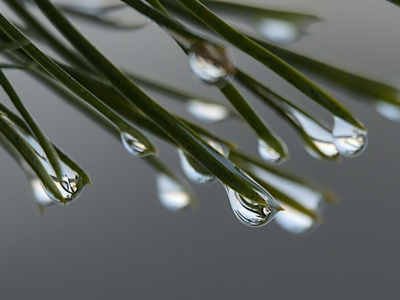
Scots Pine
A hardy coniferous tree native to Eurasian forests, from temperate to boreal zones. Recognizable by its orange-red upper bark and twisted blue-green needles. It is a key species for timber production and provides habitat for numerous woodland animals like red squirrels.
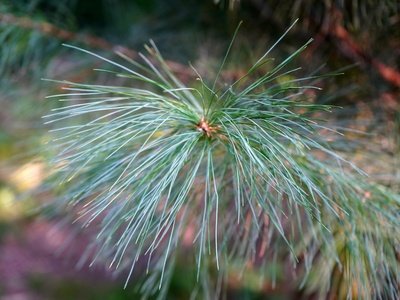
Eastern White Pine
A large conifer of eastern North America’s mixed hardwood forests, distinguished by its long, soft needles in bundles of five. Historically vital for timber, its tall, straight trunks were prized for ship masts and it provides shelter for countless wildlife species.
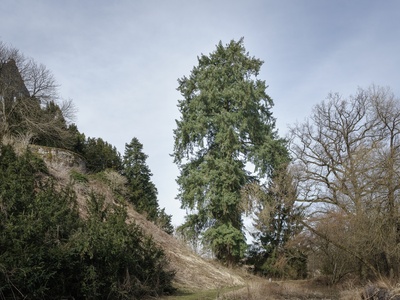
Douglas Fir
A towering evergreen native to western North America’s coastal and mountain forests. It is one of the world’s most important timber trees, known for its distinctive cones with forked bracts, and it creates critical old-growth forest habitat for spotted owls.
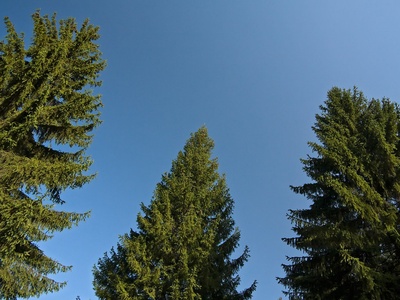
Norway Spruce
A large, fast-growing evergreen conifer native to European montane and boreal forests. Widely planted for timber and as a Christmas tree, its drooping branchlets are distinctive. It forms dense, dark forests that shelter species like the Eurasian lynx and capercaillie.
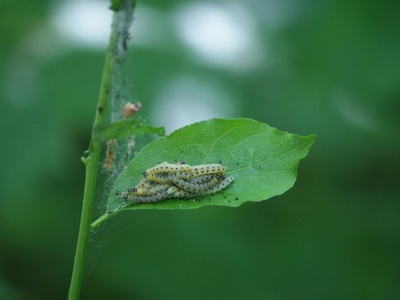
Common Beech
A dominant deciduous tree in temperate European forests, known for its smooth, silver-gray bark and wavy-edged leaves. Its dense canopy creates deep shade, and its nuts (beechmast) are a vital autumn food source for birds, mice, and wild boar.
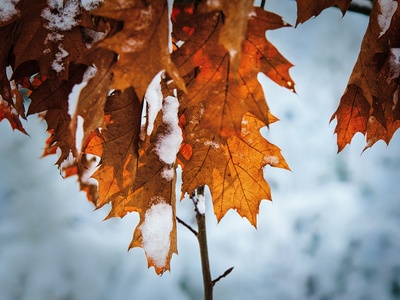
Red Oak
A widespread deciduous tree in North American hardwood forests, valued for its strong, reddish-brown wood. Its pointed-lobed leaves turn a brilliant red in autumn. The acorns are a crucial food source for deer, squirrels, and bears, supporting the entire forest food web.
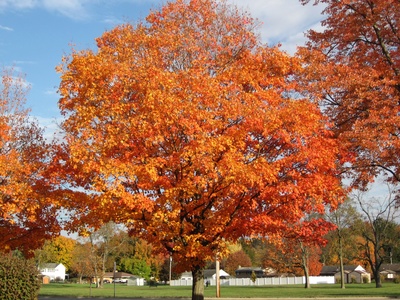
Sugar Maple
An iconic deciduous tree of eastern North America’s hardwood forests, famed for its brilliant fall foliage and the sweet sap used to make maple syrup. Its dense wood is used for furniture, and it provides habitat and food for numerous forest creatures.
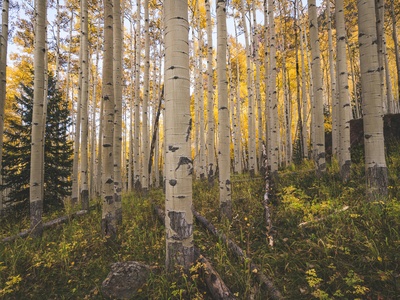
Quaking Aspen
A slender deciduous tree known for its smooth white bark and leaves that tremble in the slightest breeze. It grows in clonal colonies in boreal and montane forests across North America and is a primary food source for beavers and an important habitat tree.
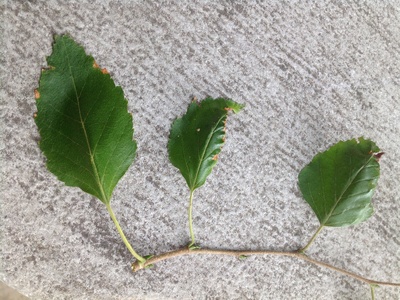
Paper Birch
A fast-growing tree of North American boreal forests, famous for its thin, white bark that peels in paper-like layers. It is a pioneer species that colonizes disturbed areas, providing browse for moose and shelter for birds like the ruffed grouse.
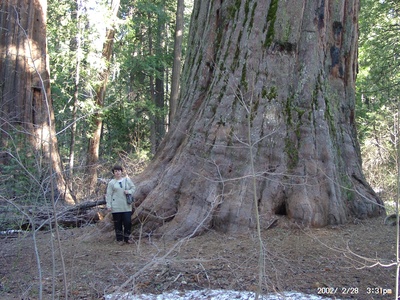
Giant Sequoia
The world’s most massive single tree, native to a narrow band of forest on the western slopes of the Sierra Nevada, California. Known for its fibrous, fire-resistant bark and immense volume, it is a symbol of longevity and resilience in its ancient forest groves.
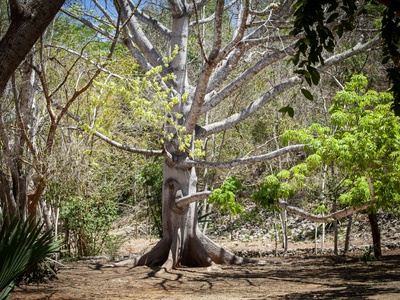
Kapok Tree
An emergent tree of tropical rainforests, towering above the canopy with a wide, buttressed trunk. Its seed pods contain a fluffy, cotton-like fiber used for insulation and stuffing. It is a vital habitat, providing homes for frogs, birds, and bromeliads.
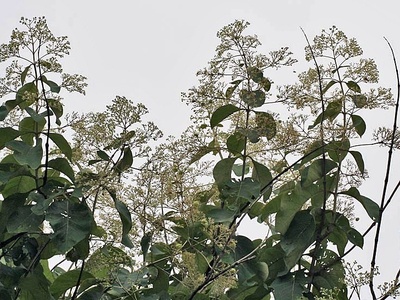
Teak
A large deciduous tree native to South and Southeast Asian monsoon forests, highly prized for its durable, water-resistant wood. Its large, papery leaves and fragrant white flowers are characteristic. Teak plantations are widespread, but natural teak forests are ecologically rich.
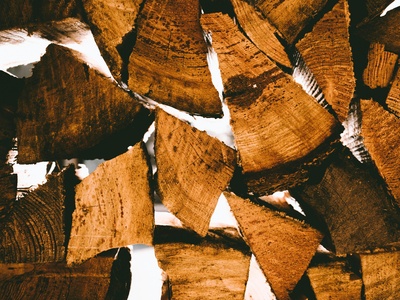
African Mahogany
A large timber tree from the tropical rainforests of West and Central Africa. It has a straight, cylindrical trunk and dark, glossy leaves. Its high-quality reddish-brown wood has led to over-harvesting, making sustainable forestry practices critical for its survival.
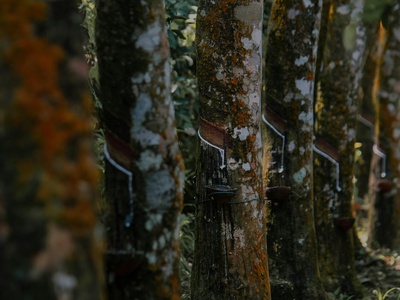
Rubber Tree
A tree native to the Amazon rainforest, famed as the primary source of natural rubber, which is harvested as latex from its bark. Wild rubber trees are an important part of the forest ecosystem, while plantations have significant economic impact worldwide.
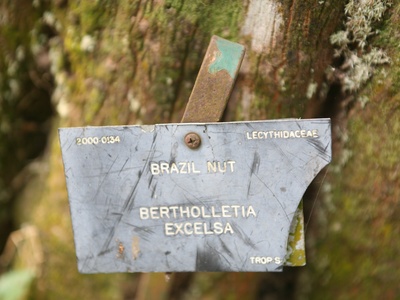
Brazil Nut Tree
One of the largest trees in the Amazon rainforest, famous for its nutrient-rich seeds (Brazil nuts). It depends on large-bodied bees for pollination and agoutis for seed dispersal, highlighting the intricate dependencies within its undisturbed forest habitat.
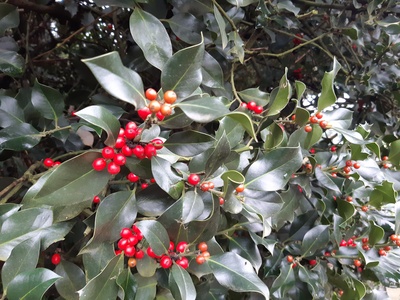
Common Holly
An evergreen shrub or small tree native to European woodlands, known for its glossy, spiny leaves and bright red berries in winter. The berries are a vital food source for birds like thrushes, while its dense foliage provides shelter from predators and weather.
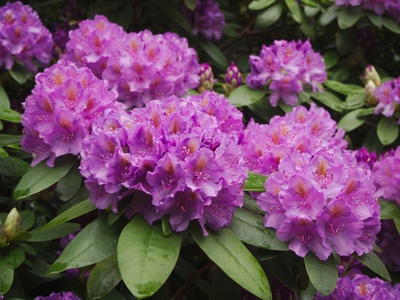
Rhododendron
A large, dense evergreen shrub with glossy leaves and showy purple flowers, found in temperate rainforests and woodlands. While native to some areas, it has become a highly invasive species in others, shading out native flora on the forest floor.
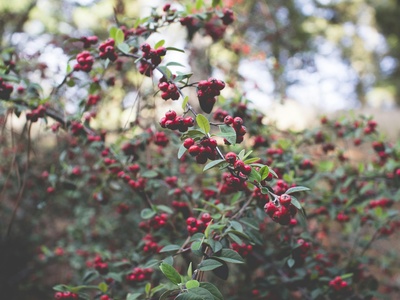
Huckleberry
A deciduous shrub found in the understory of coniferous forests in western North America. Its small, tart red berries are an important food source for bears, birds, and humans. It thrives in the acidic soil common under fir and cedar trees.
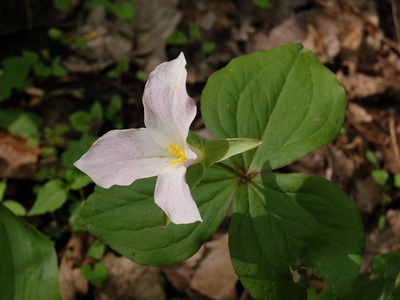
Trillium
A perennial wildflower of eastern North American deciduous forests, known for its distinctive three-petaled white flower that appears in early spring. It is a classic spring ephemeral, completing its life cycle before the forest canopy leafs out and blocks the sunlight.
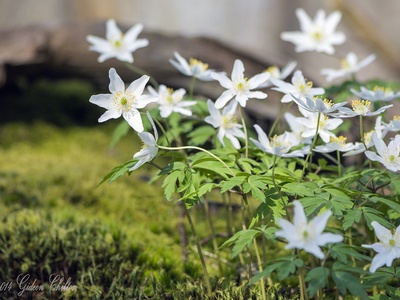
Wood Anemone
A delicate, early-spring wildflower that carpets the floor of ancient deciduous woodlands across Europe. Its star-like white or pinkish flowers open in sunlight but droop in the rain. Its presence is often an indicator of a long-established, undisturbed forest.
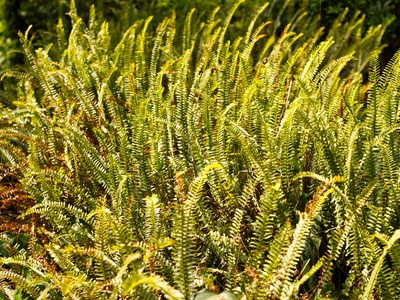
Bracken Fern
A large, hardy fern found in forest clearings and heathlands worldwide. Its triangular fronds form dense thickets, providing cover for wildlife but also outcompeting other understory plants. It is a resilient pioneer species that can quickly colonize burned areas.
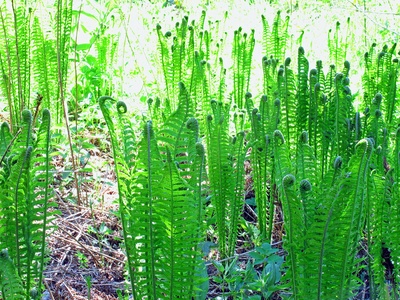
Ostrich Fern
A large, elegant fern forming vase-like clumps in the moist, shaded floodplains and hardwood forests of temperate regions. Its edible young fronds, called fiddleheads, are a foraged delicacy in spring. It spreads to form lush, dense colonies on the forest floor.
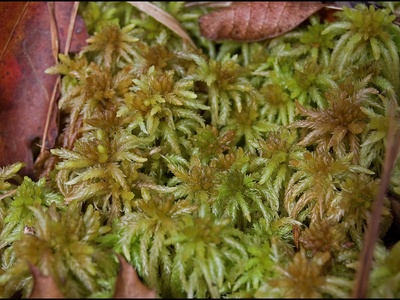
Sphagnum Moss
A genus of mosses that form dense mats in bogs, peatlands, and damp coniferous forests. It is incredibly absorbent, holding vast amounts of water and creating acidic, boggy conditions that support unique forest ecosystems and preserve archaeological remains.
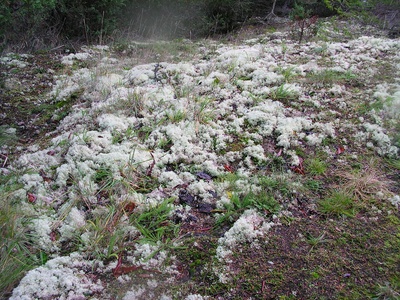
Reindeer Lichen
A pale, shrub-like lichen that forms extensive carpets on the floor of boreal and arctic forests. Despite its name, it is a crucial winter food for caribou (reindeer). Its spongy, branching structure is adapted to survive in harsh, cold climates.
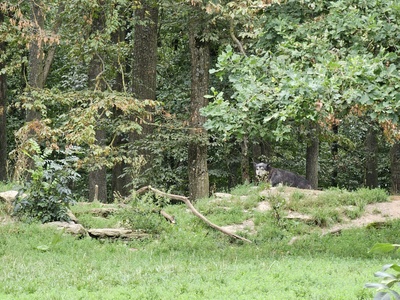
Gray Wolf
A large canine predator native to wilderness and remote forests across the Northern Hemisphere. As an apex predator, it plays a vital role in regulating prey populations like deer and elk, which in turn affects the health and structure of the entire forest ecosystem.
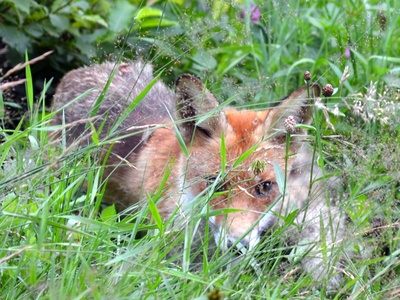
Red Fox
A highly adaptable omnivore found in forests, woodlands, and even urban areas across the globe. Recognizable by its reddish coat and bushy tail, it is a skilled hunter of rodents and birds but also eats fruits and insects, thriving in diverse forest habitats.
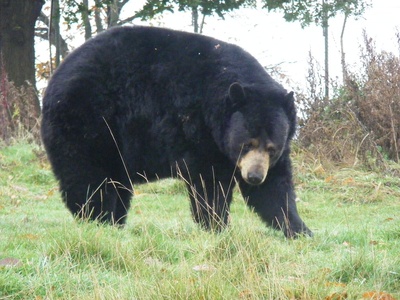
American Black Bear
The most common bear species, inhabiting forests and woodlands across North America. It is an opportunistic omnivore, eating plants, berries, insects, and fish. Black bears are excellent climbers and play a key role as seed dispersers in their forest homes.
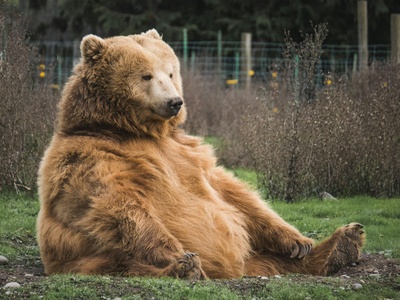
Brown Bear
A large, powerful omnivore found in the forests and mountains of North America, Europe, and Asia, including the grizzly bear subspecies. It is an apex predator that shapes its ecosystem by controlling herbivore numbers and enriching soil through its foraging.
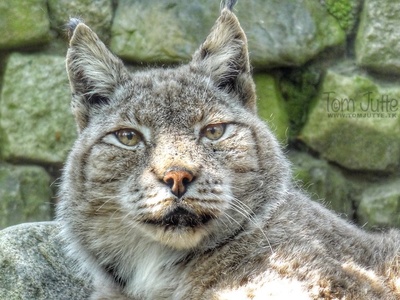
Eurasian Lynx
A secretive, medium-sized wild cat of European and Siberian forests, recognizable by its tufted ears and short tail. A specialized hunter of deer and other small mammals, its presence indicates a healthy, functioning forest ecosystem with a sufficient prey base.
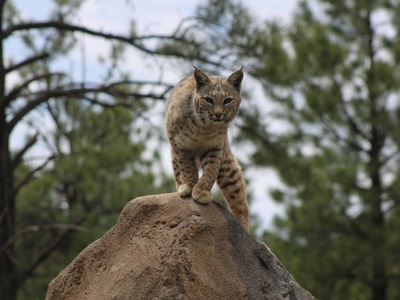
Bobcat
A stealthy and adaptable wild cat native to North American forests and woodlands. Named for its short, “bobbed” tail, it is a skilled predator of rabbits, rodents, and other small animals. Its spotted coat provides excellent camouflage on the forest floor.
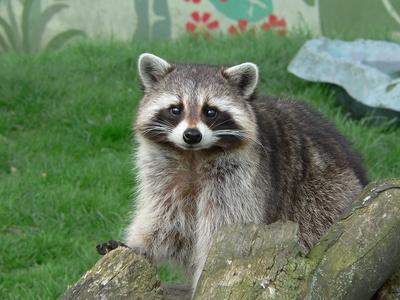
Raccoon
A highly intelligent, nocturnal omnivore with a distinctive masked face and ringed tail, common in North American deciduous forests. Its dexterous front paws allow it to forage for a wide variety of foods, from nuts and fruits to crayfish in forest streams.
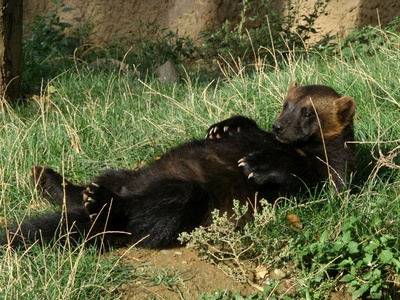
Wolverine
A famously fierce and solitary member of the weasel family, inhabiting remote boreal forests and tundra of the Northern Hemisphere. It is a powerful scavenger and predator capable of taking down large prey, requiring vast, undisturbed forest territories to survive.
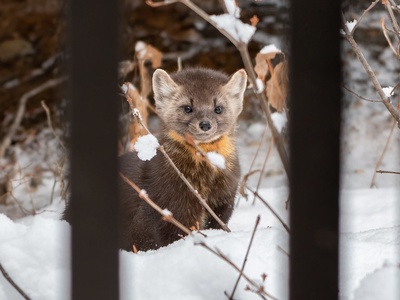
Pine Marten
A slender, agile carnivore of the weasel family, at home in the coniferous and mixed forests of Europe. An expert climber, it preys on squirrels, birds, and small mammals. Its preference for mature forest makes it an indicator of woodland health.
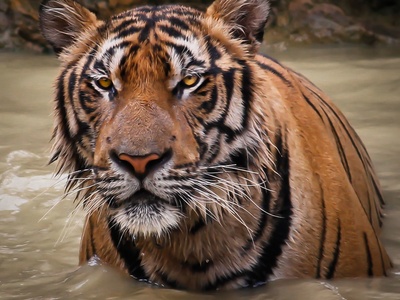
Tiger
The largest cat species, found in the forests and grasslands of Asia. As an apex predator, it is essential for controlling populations of animals like deer and wild boar. Its striped coat provides camouflage for ambushing prey in the dappled forest light.
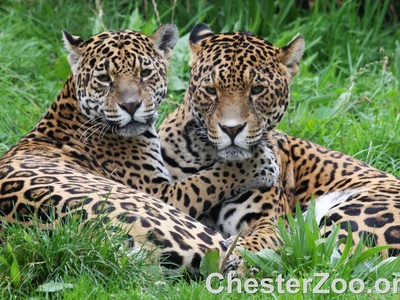
Jaguar
The largest cat in the Americas, a powerful predator of tropical and subtropical forests. With an exceptionally strong bite, it preys on a wide range of animals. The jaguar is a keystone species, vital for maintaining the structure of forest ecosystems.
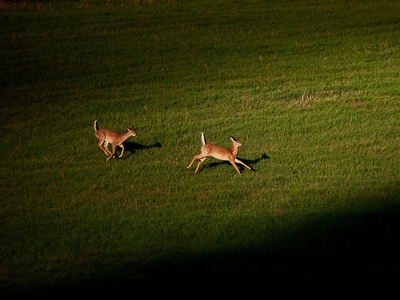
White-tailed Deer
A highly adaptable herbivore found in deciduous forests and woodlands across the Americas. Recognized by the white underside of its tail, which it raises as an alarm. It is a keystone browser, shaping the vegetation structure of the forest understory.
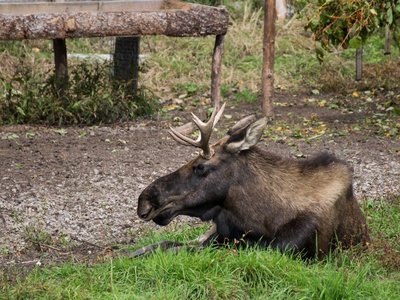
Moose
The largest member of the deer family, inhabiting boreal and mixed deciduous forests of the Northern Hemisphere. Its massive size and palmate antlers are distinctive. A powerful browser, its feeding habits can significantly alter forest composition and structure.
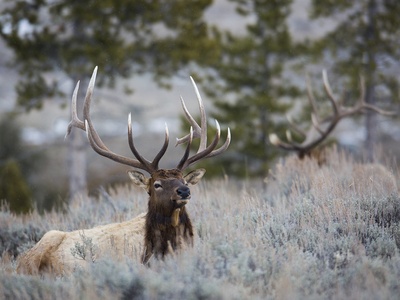
Elk
A large deer species native to the forests and montane habitats of North America and East Asia. Known for the male’s loud, bugling call during mating season. Elk are important herbivores, influencing vegetation patterns and providing food for predators like wolves.
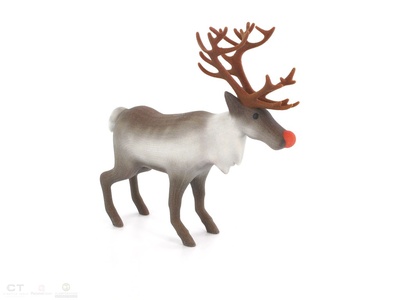
Reindeer
A deer species adapted to cold environments, found in the boreal forests and tundra of the Arctic. Also known as caribou in North America, it feeds on lichens, mosses, and plants, and its migrations are a key feature of its forest ecosystem.
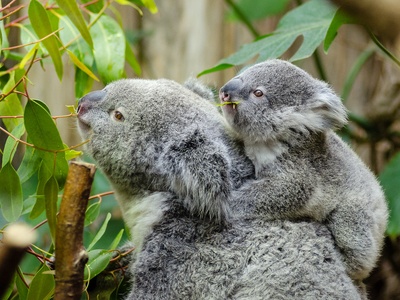
Koala
An arboreal marsupial native to the eucalyptus forests of eastern Australia. It has a specialized diet, feeding almost exclusively on eucalyptus leaves. Its survival is directly tied to the health and conservation of its specific forest habitat.
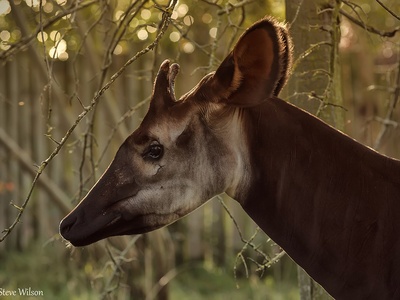
Okapi
A reclusive herbivore native to the dense rainforests of the Democratic Republic of Congo. Despite its zebra-like leg stripes, it is the only living relative of the giraffe. It uses its long tongue to browse for leaves, buds, and fruit in the forest understory.
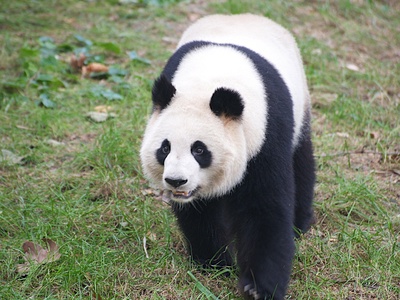
Giant Panda
A bear species native to the temperate bamboo forests of south-central China. It is a conservation icon, with a diet that is over 99% bamboo. Its survival depends entirely on the protection of these specialized mountain forest habitats.
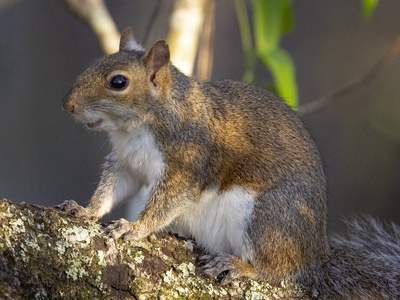
Eastern Gray Squirrel
A highly successful tree squirrel common in the deciduous and mixed forests of eastern North America. It is a crucial seed disperser, famous for burying nuts and acorns that it later forgets, effectively planting new trees and shaping forest regeneration.
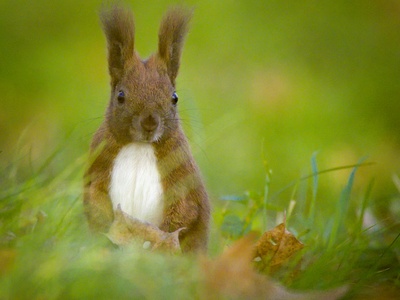
Red Squirrel
A small, arboreal squirrel with characteristic ear tufts, native to coniferous and broadleaf forests across Eurasia. It feeds primarily on tree seeds, especially from pine cones. Its populations are threatened by the larger, invasive Eastern Gray Squirrel in some areas.
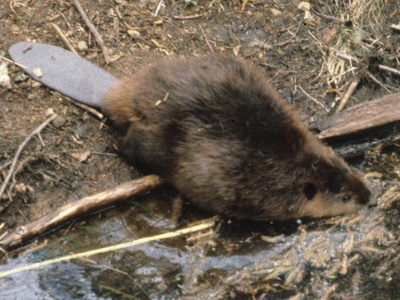
North American Beaver
A large, semi-aquatic rodent known for building dams and lodges in forest rivers and streams. As an ecosystem engineer, its dam-building activities create wetlands that dramatically increase biodiversity, making it a keystone species in North American forests.
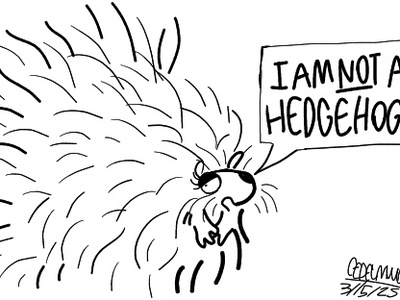
North American Porcupine
A slow-moving, solitary rodent of North American coniferous and mixed forests, famous for its sharp quills used for defense. It is an adept climber that feeds on tree bark, buds, and leaves, often leaving visible marks on forest trees.
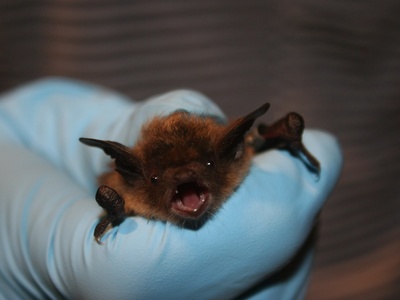
Little Brown Bat
A small bat species once common in forests across North America, roosting in tree cavities and caves. It is a voracious insectivore, consuming vast quantities of mosquitoes and other insects nightly. Its populations have been devastated by white-nose syndrome.
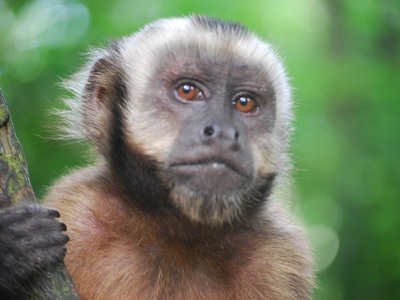
Capuchin Monkey
A highly intelligent and social primate found in the tropical forests of Central and South America. Known for its tool use, it has a varied omnivorous diet. It plays an important role as a seed and pollen disperser, contributing to forest regeneration.
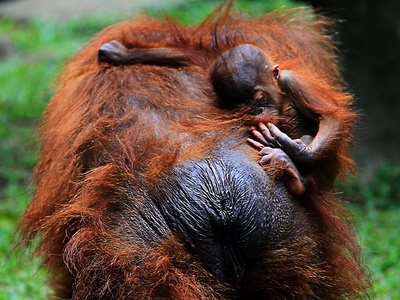
Orangutan
A large, solitary ape native to the rainforests of Borneo and Sumatra. Spending most of its life in the trees, it is a critical seed disperser, earning it the nickname “gardener of the forest.” It is critically endangered due to habitat loss.
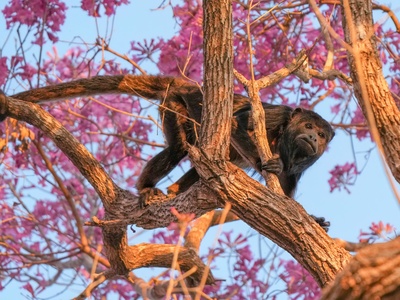
Howler Monkey
A genus of large New World monkeys from the tropical forests of the Americas, named for their loud, guttural howls that can travel for miles. They are primarily folivores, feeding on leaves in the high canopy, and play a role in seed dispersal.
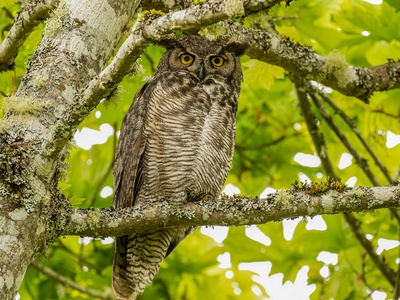
Great Horned Owl
A large, powerful owl with prominent ear tufts, widespread in the forests and woodlands of the Americas. A formidable nocturnal predator, it preys on a wide variety of animals, from rodents to skunks, playing a key role in controlling prey populations.
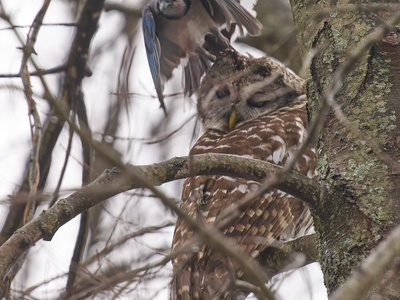
Barred Owl
A large owl of mature forests in eastern North America, known for its distinctive “who-cooks-for-you” call. Lacking ear tufts, it has dark brown eyes and mottled brown-and-white plumage, providing excellent camouflage in the dappled light of the forest.
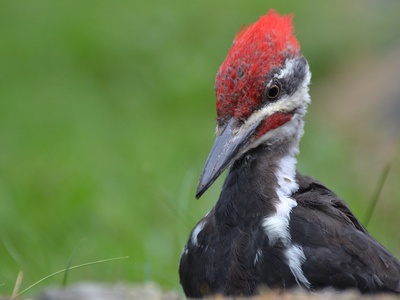
Pileated Woodpecker
The largest woodpecker in North America, inhabiting mature deciduous and coniferous forests. Its loud drumming and distinctive rectangular holes, excavated in search of carpenter ants, are a common sign of its presence. Its cavities provide homes for other species.
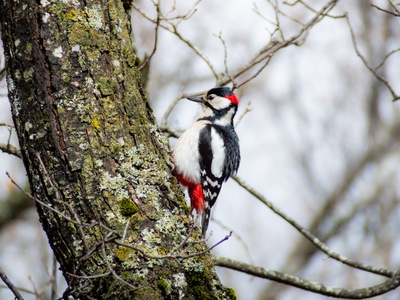
Great Spotted Woodpecker
A common woodpecker of Eurasian woodlands and forests, recognized by its striking black, white, and red plumage. It drums on trees to communicate and excavates nests, feeding on insects, nuts, and seeds. It is a vital part of the forest ecosystem.
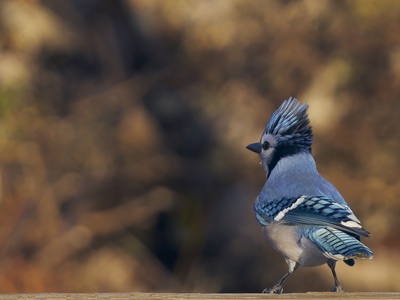
Blue Jay
A noisy and intelligent bird of the corvid family, found in deciduous and mixed forests of eastern North America. Known for its bright blue plumage and crest, it plays a key role in forest regeneration by caching acorns and other nuts.
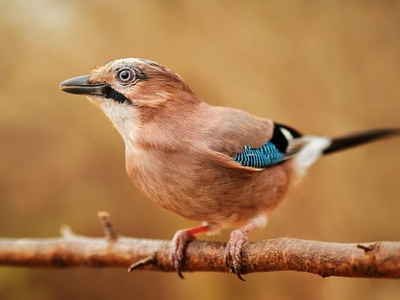
Eurasian Jay
A colorful member of the corvid family found across Europe and Asia’s mixed woodlands. Recognizable by its bright blue wing patch, it is famous for burying thousands of acorns each autumn, making it a critical agent of oak forest dispersal and regeneration.
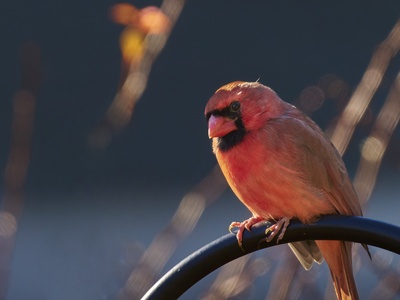
Northern Cardinal
A vibrant, non-migratory songbird found in North American woodlands, forest edges, and thickets. The male’s brilliant red plumage and the species’ cheerful song make it a favorite. They are common visitors to forest clearings and feed on seeds and insects.
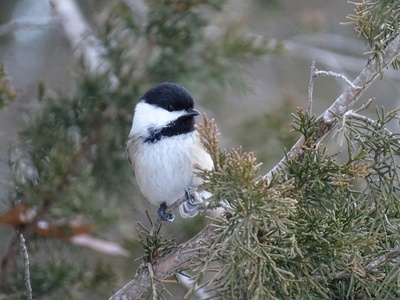
Black-capped Chickadee
A small, curious songbird of North American mixed and deciduous forests, known for its acrobatic foraging and familiar “chick-a-dee-dee” call. It is a cavity nester and plays a role in controlling insect populations within its woodland territory.
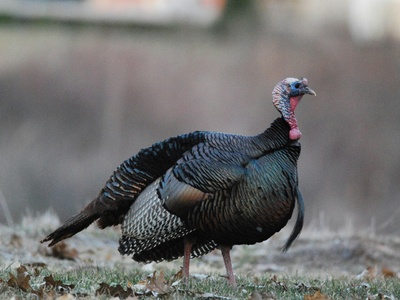
Wild Turkey
A large ground-dwelling bird native to the forests of North America. Once hunted nearly to extinction, it has made a remarkable comeback. It forages on the forest floor for nuts, seeds, and insects, and roosts in trees at night for safety.
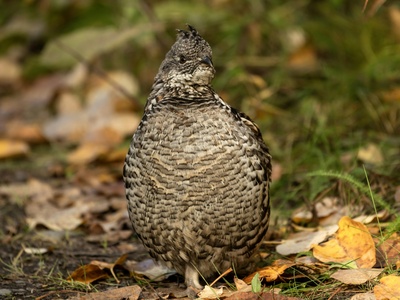
Ruffed Grouse
A medium-sized grouse of North American aspen and mixed-wood forests. It is known for the male’s deep, drumming sound, created by beating its wings. This well-camouflaged bird forages on the forest floor for buds, leaves, and berries.
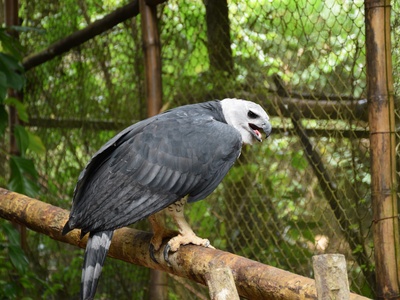
Harpy Eagle
One of the world’s largest and most powerful eagles, inhabiting the canopy of tropical rainforests in Central and South America. An apex predator, it preys on tree-dwelling mammals like sloths and monkeys, requiring vast, intact forest to survive.
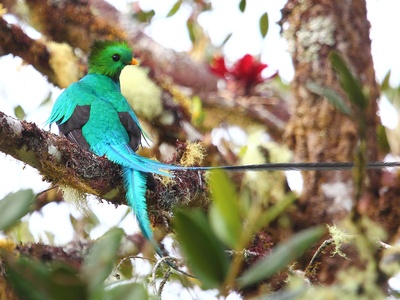
Resplendent Quetzal
A spectacularly beautiful bird from the cloud forests of Central America, famous for the male’s incredibly long tail feathers. It nests in tree cavities and feeds on fruit, insects, and small lizards, playing a role in seed dispersal.
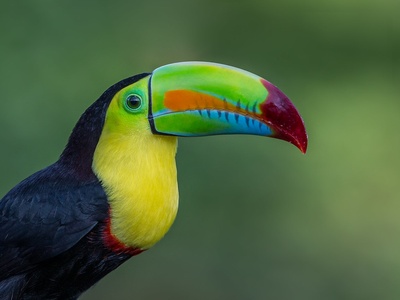
Keel-billed Toucan
A social bird known for its huge, rainbow-colored bill, native to the tropical rainforests of Latin America. The large but lightweight bill is used for reaching fruit. As a major fruit-eater, it is an important disperser of seeds throughout the forest.
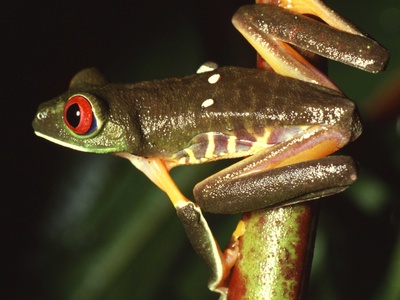
Red-eyed Tree Frog
A stunningly vibrant frog from the tropical rainforests of Central America. It is nocturnal, with bright red eyes and a colorful body that it uses to startle predators. It spends its life in the forest canopy near water, where it lays its eggs on leaves.
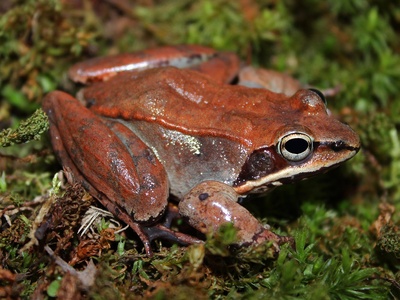
Wood Frog
A remarkable amphibian of North American forests, known for its ability to survive being frozen solid during winter. It breeds in ephemeral vernal pools in the forest and spends the rest of its life in the surrounding woodland, feeding on invertebrates.
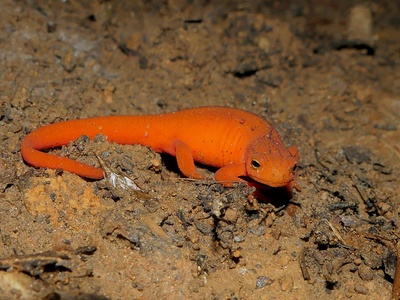
Eastern Newt
An amphibian with a complex life cycle, found in the deciduous forests of eastern North America. Its bright orange terrestrial “eft” stage is commonly seen on the forest floor after a rain, before it returns to ponds to live out its aquatic adult stage.
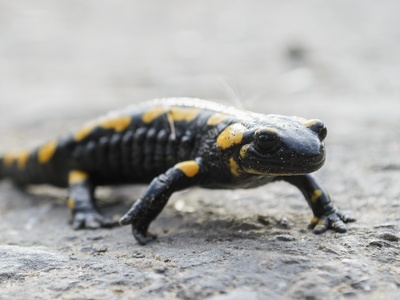
Fire Salamander
A conspicuous black-and-yellow salamander from the deciduous forests of Europe. It is largely nocturnal and hides in cool, damp places like fallen logs. Its bright colors warn predators of the toxic secretions from its skin.
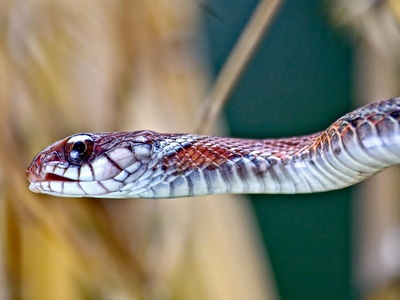
Common Garter Snake
A highly adaptable snake found in a variety of habitats, including forests, across North America. It is non-venomous and feeds on a wide range of prey like earthworms, amphibians, and slugs, making it a common sight on the forest floor.
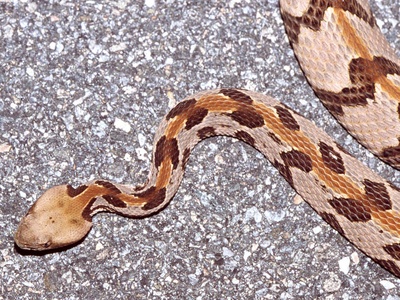
Timber Rattlesnake
A large, venomous pit viper of rugged, deciduous forests in the eastern United States. It plays a vital role as a predator of rodents. Its excellent camouflage and shy nature mean it is rarely seen, preferring to avoid human contact.
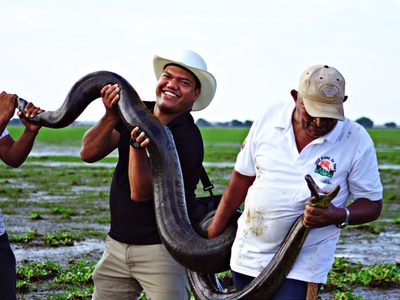
Green Anaconda
One of the world’s largest snakes, native to the swamps and slow-moving rivers within the tropical rainforests of South America. A powerful constrictor, this semi-aquatic giant is an apex predator, preying on a wide variety of animals.
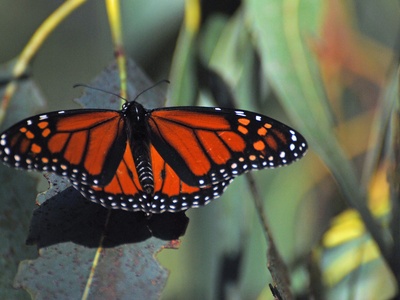
Monarch Butterfly
An iconic butterfly known for its incredible multi-generational migration across North America, often resting in specific forest groves. Its caterpillars feed exclusively on milkweed plants, and its bright orange color warns predators of its toxicity.
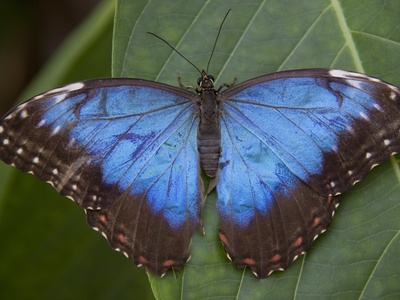
Blue Morpho Butterfly
A large, iridescent blue butterfly found in the tropical rainforests of Latin America. Its brilliant color is not from pigment but from the microscopic structure of its wings. It flies through the forest understory, feeding on the juice of rotting fruit.
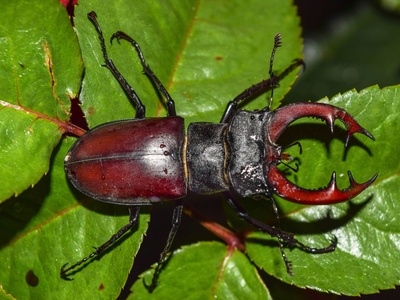
Stag Beetle
One of Europe’s largest beetles, named for the male’s large mandibles that resemble a stag’s antlers. The larvae live for years in rotting wood on the forest floor, playing a crucial role as decomposers in mature deciduous woodlands.
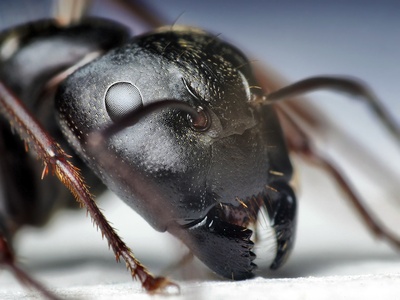
Carpenter Ant
A large ant species common in forests worldwide. They excavate nests in dead, damp wood, creating galleries that can weaken trees but also accelerate decomposition. They are important foragers and prey for other forest animals like woodpeckers.
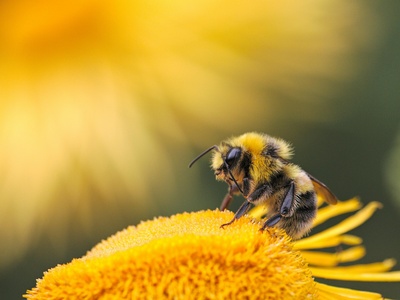
Honey Bee
While managed by humans, wild or feral colonies are naturalized in forests worldwide. They nest in tree hollows and are essential pollinators for countless native wildflowers and trees, making them a functionally integrated part of many forest ecosystems.
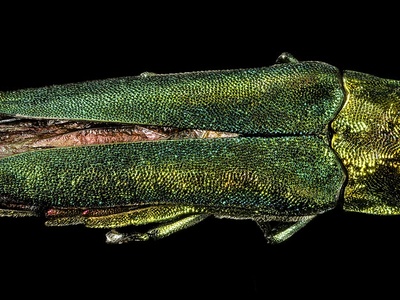
Emerald Ash Borer
An invasive jewel beetle from Asia that has devastated ash tree populations in North American forests. The larvae feed on the inner bark, disrupting the tree’s ability to transport water and nutrients, highlighting the vulnerability of forests to non-native species.
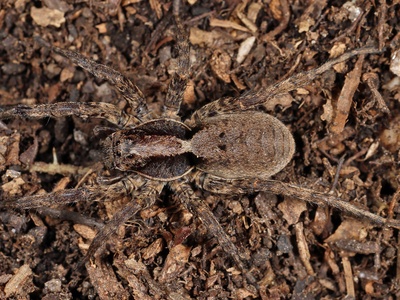
Forest Wolf Spider
A common ground-dwelling spider of European forests. It does not build a web but actively hunts for prey on the forest floor, relying on its excellent camouflage and eyesight. The female famously carries her egg sac and then her spiderlings on her back.
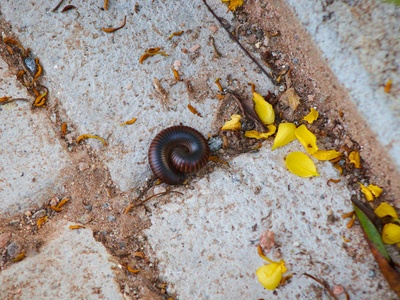
Giant Millipede
One of the world’s largest millipedes, native to the forests of East Africa. As a detritivore, it plays a vital role in decomposition, slowly moving along the forest floor and consuming decaying leaves and wood, recycling nutrients back into the soil.
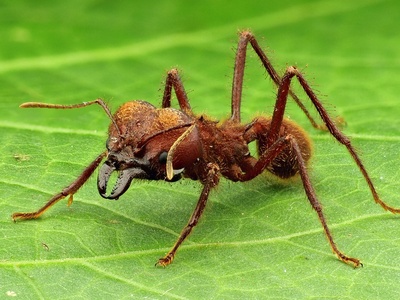
Leafcutter Ant
A fascinating ant of tropical American forests, known for carrying leaf fragments back to its massive underground colony. The ants don’t eat the leaves but use them to cultivate a special fungus, which serves as their primary food source.
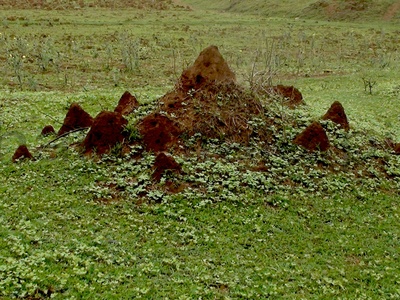
Termite
A common termite species in Neotropical forests, known for building dark, spherical nests on trees. They are crucial decomposers, breaking down dead wood and plant matter, but can also be pests. Their colonies are complex societies with different castes.
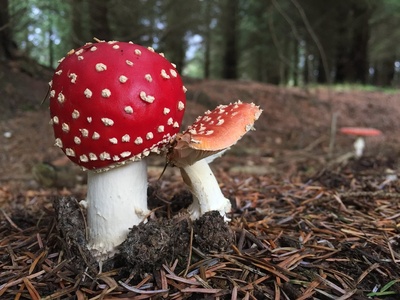
Fly Agaric
This iconic red-and-white-spotted mushroom is common in boreal and temperate forests of the Northern Hemisphere, often growing near pine or birch trees. While famous in folklore, it is poisonous and plays a key mycorrhizal role with tree roots.
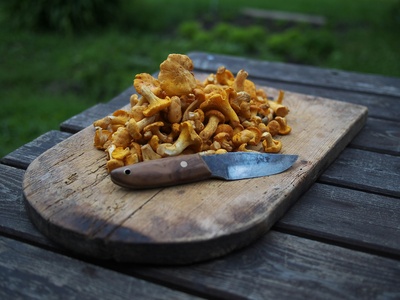
Chanterelle
A prized edible mushroom found in the mossy, damp deciduous and coniferous forests of the Northern Hemisphere. Its golden color, wavy cap, and fruity aroma make it a favorite of foragers. It forms a beneficial symbiotic relationship with tree roots.
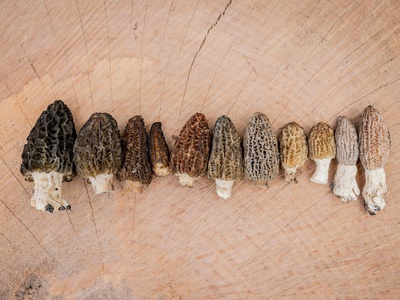
Morel
A highly sought-after edible fungus with a distinctive honeycomb-like cap, appearing for a short time in spring on the floor of temperate forests. It is a saprophyte, feeding on decaying organic matter, and often fruits prolifically after a forest fire.
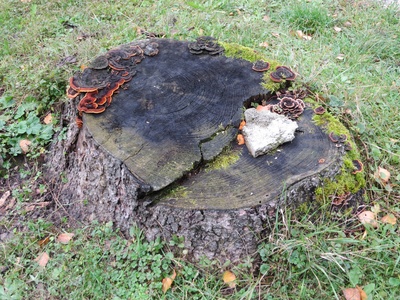
Turkey Tail
A common bracket fungus that grows on dead logs and stumps in forests worldwide. Named for its colorful, fan-like rings that resemble a turkey’s tail, it is a vital decomposer, breaking down tough wood lignin and recycling nutrients.
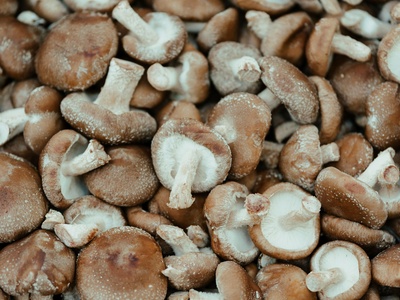
Shiitake
An edible mushroom native to the deciduous forests of East Asia, where it grows on decaying hardwood trees. Now cultivated globally, its wild counterparts are important decomposers that play a natural role in the nutrient cycle of their native forest habitats.
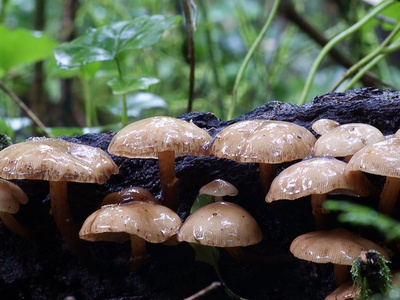
Honey Mushroom
A widespread fungus known for forming huge, interconnected underground networks, making it one of the world’s largest organisms. While some species are parasitic and can kill living trees, they are also crucial decomposers of dead wood in the forest.
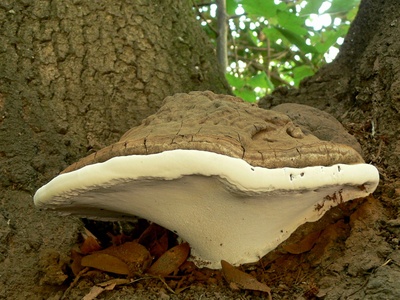
Artist’s Conk
A hard, woody perennial bracket fungus that grows on the sides of living and dead trees in forests worldwide. Its smooth white underside can be drawn on, hence the name. It causes white rot, breaking down wood and contributing to the forest nutrient cycle.
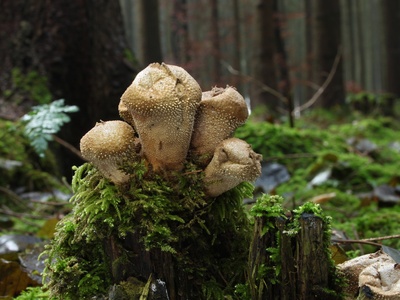
Common Puffball
A common terrestrial fungus found on the forest floor worldwide. When young, it is a white, spherical mushroom, but at maturity it releases its spores in a puff of brown “smoke” when disturbed. It is a saprotroph, decomposing leaf litter.
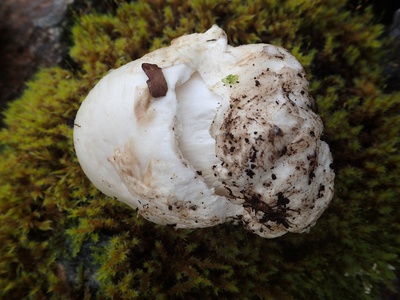
Destroying Angel
A pure white, elegant-looking mushroom found in North American mixed woods. It is one of the most lethally poisonous fungi in the world, containing amatoxins that cause irreversible liver failure. It serves as a stark reminder of the dangers of misidentification.
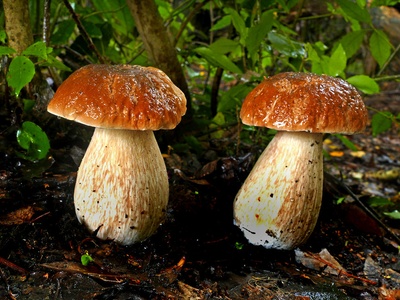
King Bolete
A large, meaty edible mushroom, also known as Porcini, found in coniferous and deciduous forests across the Northern Hemisphere. It forms a mycorrhizal association with trees like spruce and pine, exchanging nutrients and supporting forest health.
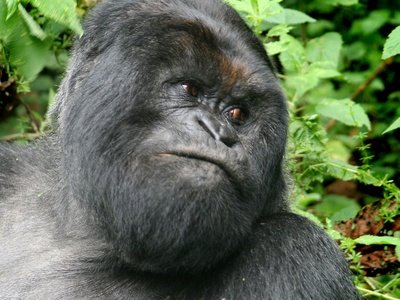
Mountain Gorilla
A critically endangered great ape living in the high-altitude cloud forests of the Virunga Mountains in Central Africa. A gentle herbivore, it plays a key role in its ecosystem by trimming vegetation and dispersing seeds, shaping the forest structure.
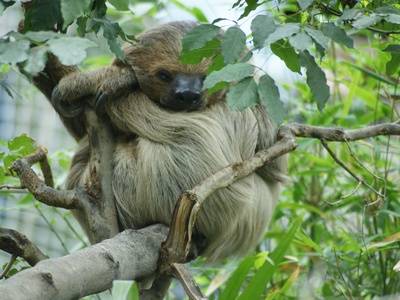
Two-toed Sloth
An incredibly slow-moving, nocturnal mammal that spends nearly its entire life upside down in the canopy of Central and South American tropical forests. Its fur often hosts algae, providing camouflage. They are important browsers of tree leaves.
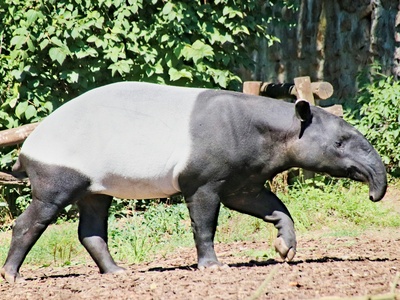
Baird’s Tapir
A large, primitive herbivore with a prehensile snout, inhabiting the dense tropical forests of Central America and northern South America. Known as the “gardener of the forest,” it is a crucial disperser of large seeds, essential for forest diversity.
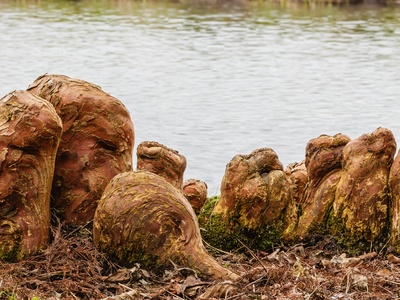
Bald Cypress
A large, deciduous conifer native to the swamp forests of the southeastern United States. It is famous for its “knees”—woody projections that rise from its roots—and its resistance to rot. It creates a unique and vital wetland forest habitat.
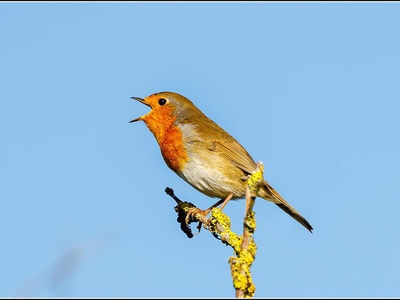
European Robin
A small, plump songbird with a bright orange-red breast, common in European woodlands and forests. It is famously bold and often follows gardeners or large animals, catching invertebrates disturbed by their activity on the forest floor.
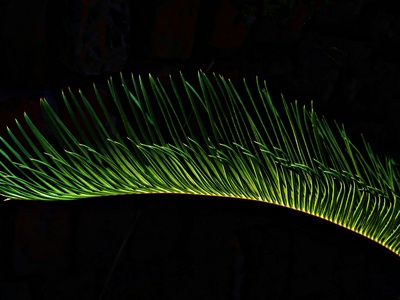
Western Sword Fern
A lush, evergreen fern that forms dense clumps in the understory of coniferous rainforests in western North America. Its leathery, sword-shaped fronds provide year-round ground cover, preventing erosion and offering shelter for small forest animals.
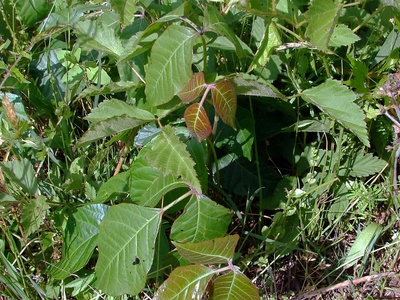
Poison Ivy
A climbing vine or shrub common in North American woodlands, notorious for causing an itchy rash from its oil, urushiol. While a nuisance to humans, its berries are a valuable winter food source for many bird species, and it provides ground cover.
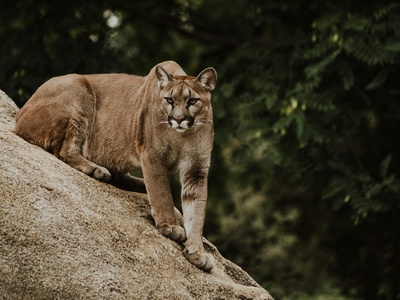
Mountain Lion
A large, solitary cat found in forest and mountain habitats throughout the Americas. Also known as a cougar or puma, it is an ambush predator of deer and other mammals, serving as a keystone species by regulating herbivore populations.
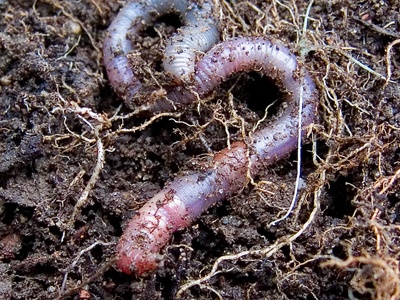
Earthworm
While native to Europe, this species is now a highly influential, naturalized inhabitant of temperate forests globally. As an ecosystem engineer, it aerates soil and rapidly breaks down leaf litter, profoundly altering the forest floor’s nutrient cycle.
